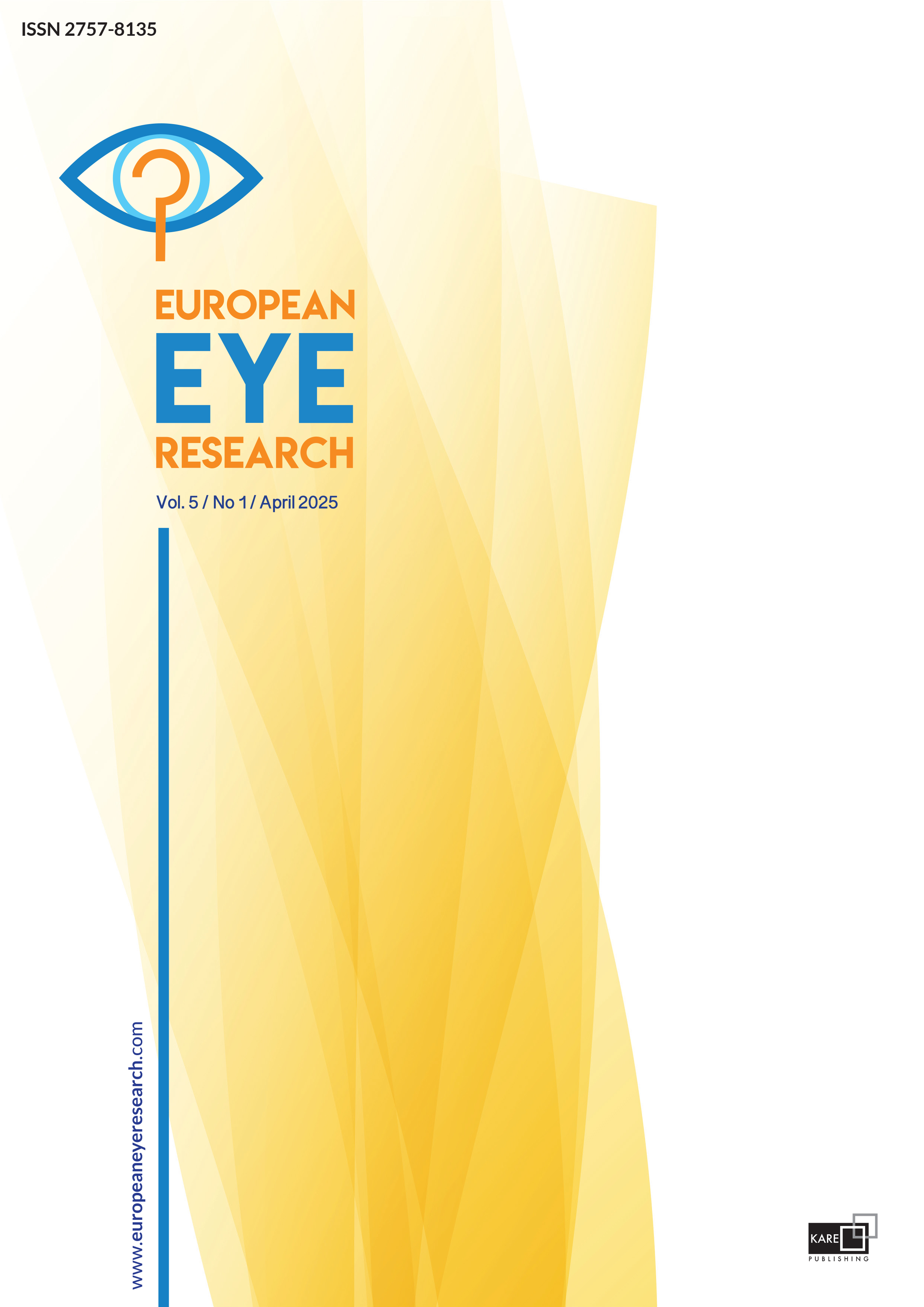

Evaluation of deep sclerectomy and trabeculectomy in the treatment of glaucoma
Serap Karaca1, Halit Oguz2, Mustafa Hepokur3, Omer Faruk Yilmaz11Department of Ophthalmology, Goztepe Prof. Dr. Suleyman Yalcin City Hospital, Istanbul, Türkiye2Department of Ophthalmology, Istanbul Medeniyet University Faculty of Medicine, Istanbul, Türkiye
3Department of Ophthalmology, Istanbul Cerrahpasa University Faculty of Medicine, Istanbul, Türkiye
PURPOSE: This study aims to compare the clinical outcomes of deep sclerectomy and trabeculectomy surgeries, both utiliz-ing 5-fluorouracil
METHODS: In this study, 11 eyes of 10 patients (14.3%) in the deep sclerectomy group and 66 eyes of 61 patients (85.7%) in the trabeculectomy group were retrospectively examined. Success in intraocular pressure (IOP) was defined as being below 21 mmHg without medication, partially successful if achieved below 21 mmHg with a single molecule, considered less success-ful with two to four molecules for maintaining IOP below 21 mmHg, and deemed unsuccessful if IOP exceeded 21 mmHg.
RESULTS: The deep sclerectomy group showed a success rate of 81.8% on post-operative day 1, with 18.2% considered unsuccessful; at post-operative 6 months, the success rate was 12.5%, with 50% partially successful and 37.5% less successful. In the trabeculectomy group, the success rate was 97% on post-operative day 1, with 3% considered unsuccessful; at post-operative 6 months, the success rate was 60.8%, with 15.7% partially successful, 13.7% less successful, and 9.8% unsuccessful. Trabeculectomy patients experienced complications such as choroidal detachment (6.1%), shallow anterior chamber (4.5%), tight suturing (3%), internal ostium occlusion (3%), posterior synechia (3%), bleb failure (1.5%), cyclodialysis/iridodialysis (1.5%), and hyphema (1.5%). In the deep sclerectomy group, tight suturing (36.3%), and dellen (9.09%) were observed, with no other complications reported.
CONCLUSION: Trabeculectomy surgery has been observed to be superior to deep sclerectomy in follow-ups up to 48 months postoperatively. However, it is noted that there is a higher risk of post-operative complications.
Manuscript Language: English



